The Evolution of Siding Products

MV Home During Writing Of This Post
I am Greg Kapitan and I have been working in the home exterior siding business since the early 1980’s personally witnessing the evolution of siding products with a history of installation of a variety of siding products with my own hands.
Recently I took a much needed break from the business and found myself on Martha’s Vineyard sitting there noticing the cedar shingle siding on the waterfront home where my wife and I were staying. I realized this cedar shingle siding has been quite common and the norm in New England with little change in the siding market in this part of the country. I thought about how this was so unlike most of the rest of the country and started thinking about how has siding products evolved over the years and found myself researching the subject.
A Brief History of Siding Timeline
Keep in mind as you read that this timeline is according to my own personal experience since the 1980’s but I do believe that many other siding contractors who were involved in the industry during this time would have a similar experience to share. The stories of the evolution of siding will include information on all of the the following siding options:
Introduction of Asbestos Siding Products
Asbestos Shingle Siding – This product was introduced in 1907 when Ludwig Hatschek invented the process for creating asbestos cement a process that is still used today. It comes in a stack of thinly pressed together small sheets of siding (3’x2′) that is made from a mixture of asbestos, portland cement and water then pressed between metal plates with heavy pressure creating sheets.
The product was considered superior and by the 1920s was recommended by the National Board of Fire Underwriters to replace wood as a siding and roofing material boosting an increase in sales for its ability to protect structures from moisture and its ability to provided insulation from heat and fire.
Additionally, the product was comparatively light weight, easy to apply, weather and fireproof, had a nice appearance and permanence, all made the product a popular choice. This siding product is one of the very first siding products I installed with my own hands in the state of New York early on in my home improvement career.
Reputation of Asbestos Siding
Asbestos siding will last for many years and has a history of rarely having warranty issues. The problem most homeowners may have experienced with this product is the fact that it is brittle and cracks at a gentle to moderate impact. The product had no flexibility whatsoever and it could often seen on homes with the bottom row of the siding broken off from the wheels of lawnmowers or other items had bumped into it.
Dangers of Asbestos Siding
There are several issues to consider with the dangers of asbestos siding including the dust which was known to contain 20-45% asbestos, this is a concern the public was made aware of later. The asbestos fibers can easily become airborne when the product is being power washed, sanded sawed, drilled, removed or disturbed. Workers in the industry are at the greatest risk of being exposed to the fibers during manufacturing, installation, removal, renovation and demolition processes. High levels of this toxic dust can often be found in the factories and plants resulting in a high risk of diseases caused from the exposure.
The Popularity of Asbestos Siding
From around 1907 until the early 1980’s this siding product was well received by the public as well as with siding installers over the years. During the late 1960s and early /70s the news media began to report the health issues and the EPA banned the use of asbestos in the manufacturing of building products in 1973. Into the 1980’s the health risk with Asbestos siding became so apparent with public awareness regarding the dangers of breathing in the dust and causing mesothelioma that, the popularity of new installations with the product soon diminished quickly to just about non-existent today.
Introduction of Aluminum Siding Products
Aluminum Siding modern siding was born in 1937 with Francis “Frank” Hoess securing patent on the process in 1938 with the method of using a locking joint to solve the problem of water leakage that were a problem of siding designs of the time.
In the late 1947’s showing up in the market as the next biggest and greatest siding option and was the rage of the 1960s. This siding product was very popular with installers due to it coming in long horizontal lengths of 12′ long and up to 12″ wide for quick installation and it came pre-painted, right out of the box.
The product was manufactured from aluminum coil that was chemically coated to protect the metal and then paint was applied for further protection and color that was baked on for a bright and durable siding product.
Reputation and Problems of Aluminum Siding
Aluminum Siding experienced great success since the late 1940’s. After the product was initially installed it was time to see how it would stand up to the elements. The issues that homeowners started encountering was it easily dented even a good hail storm can damage aluminum siding. If someone were to hit it with a baseball or golf ball, it would most certainly leave a dent in the product. Furthermore, dents were noticed from impacts from car doors, lawnmowers and other minor impacts. It was like the dents you would see on automobiles.
It was like a new problem was borne for a variety of reasons. For instance, metal conducts heat and in the summer can even be hot to the touch if painted with a dark color and in the winter it actually sucks the heat from the home requiring it be well-insulated to prevent the problem. There was also the issue of paint peeling off from aluminum siding due to paint adhesion issues of aluminum siding, this is a metallic product that is not very good at holding paint. There were also siding chalking and fading paint issues that became a huge turn-off for many homeowners.
The painted surface of aluminum siding provides minimal adhesion and the siding also moves at a different rate than the paint. So with temperature changes especially when exposed to the sun where the aluminum gets hot to the touch expanding as metallic product do, the paint would often fall off in small sections.
Popularity of Aluminum Siding
The aluminum siding product was most popular in the mid 1950’s- early 1980’s due to the marketing of never having to paint your home again. With the product becoming so wildly popular even Hollywood got involved producing a movie comedy about it in 1987 called Tin Men starring Richard Dreyfuss, Danny DeVito and Barbara Hershey is worth watching.
Today the Aluminum Siding product has lost most of it’s popularity due many of the issues with paint peeling, fading, chalking and denting issues mentioned above. Today aluminum siding sits at only about 15% of the siding market share. Most of the remaining market of new installations is in the northeast and midwest part of the country.
Introduction of Vinyl Siding Products
Vinyl Siding products were introduced into the market back in the late 1950’s when plastics gained popularity. The vinyl siding product became a direct rival to aluminum siding competing with the market for its fair share of the home improvement market gaining 32% of the siding market in the United States. Keep in mind that this was an era when plastics and vinyl were being embraced and loved by many Americans in many different products.
Reputation of Vinyl Siding
Move over aluminum, here comes vinyl! Coming into the market as a replacement for aluminum homeowners were enticed with the fact that you would never have to paint as well as the color was not just surface but was through the entire thickness of the panel. With this came the love of Vinyl Siding and great success for the product in the mid 1960’s. They could now simply pick out a color and not have to worry about the paint ever coming flaky and or chalking off of the siding panel. The product was also pitched by many home improvement companies as an end all to the denting aluminum siding issue.
Problems with Vinyl Siding
Besides the problem with the siding not holding its color without fading or yellowing and that the product buckles in the heat, one of the most common complaints reported about vinyl siding after installations moisture would often be found forming on the surface in humid climates. Additionally, water intrusion and/or retention of moisture behind the siding product was also a concern. Due to the products lack of breathing ability, the product could hold moisture in the walls often causing mold and rot issues. There were also a number of incidents reported of the product cracking when being struck with only moderate impact.
Popularity of Vinyl Siding
The vinyl siding product was most popular in the mid 1960’s until continues to be very popular still today. Vinyl siding was and continues to be marketed as never having to paint ever again, offers better insulating qualities than aluminum and will not dent or have peeling paint issues. Vinyl Siding popularity continues to this day in some cities in the northeast part of the country although overall, it has lost more than 60% of its market share due to competing products such as fiber cement (such as HardiePlank) and LP SmartSide siding, engineered wood siding. I believe another issue was that homeowners were now looking to move away from the shiny plasticky look that vinyl siding often look like for something more real and wood like. Fiber Cement (Hardie) and SmartSide offered that look by far and away over Vinyl.
Introduction of Fiber Cement Siding Products (Hardie Plank)
Fiber Cement Siding, so next in comes the bulldog of all siding products, fiber cement siding “Hardie Plank Siding“. The reason I say “bull dog” is that this product was introduced to the United States siding market by a company called James Hardie with strategically planned domination of the US siding market. In 1990 they set out to cultivate the market for fiber cement with a mass-marketing strategy.
The company came into US the market with a notable presence in the late 1990’s with promises of a competitive pricing with wood, vinyl and aluminum selling on benefits of the product being fireproof, rot resistant and not easily damaged or dented as well as resistance to bug infestation. The popular Australian company James Hardie who manufacturers fiber cement siding products came on the scene at the perfect time when homeowners in the US were looking for an alternative siding product to the current vinyl and aluminum siding products and took the market by storm.
Reputation of Fiber Cement Siding
From its rapid introduction to the siding market back in the late 1990’s to this very day, the fiber cement siding product has experienced a very good reputation. They had to get past the fact that with the homeowners that they would, once again, have to return to an acceptance of having to repaint their homes once again after experiencing the vinyl siding products promises. The fiber cement’s reputation slightly waned as many homeowners and contractors alike began posting about fiber cement siding issues as well as fiber cement siding defects all around the internet.
Another issue homeowners were reporting was the same issue that the asbestos siding product had which was the brittleness of the product. Additionally there were a variety of installation issues as well as hammer marks, broken pieces, shrinkage gaps and the dreaded broken and chipped edges on the bottom row of the siding homeowners were commonly experiencing from lawnmowers, weed eaters and the like.
Popularity of Fiber Cement Siding

Click See & Enlarge GOOGLE Report – SmartSide (Blue) Becoming More Popular Than Harde (Yellow & Red Both Spellings)
Fiber Cement siding by James Hardie had a steady increase in popularity finally peaking out right around 2014 at which time the siding enjoyed a respectable market share of over 69% of the US market. Homeowners, contractors, builders and the big box home improvement retailers all sold, and were sold on, the fiber cement (Hardie Plank) siding product.
All of this started to change when some of the above issues started to surface with fiber cement (Hardie). In the meantime, homeowners started seeing another siding product on the market in 1997 called LP SmartSide. Homeowners and installers started sharing their experiences of the new product and it started to gain traction to catch up with the fiber cement siding market. After nearly ten years, the fiber cement dominance was now in for some stiff competition as per the Google chart above and what we are now hearing from homeowners.
Introduction of LP SmartSide Siding Products
SmartSide Siding by Louisiana Pacific (LP) is the manufacture this engineered wood siding product. Just like fiber cement product, it has been around since the late 1990’s. The product was not heavily marketed like its rival fiber cement. As a matter of fact, when fiber cement by James Hardie first came into the market, there were not offering manufactured trim to go along with the siding so builders and remodelers were using the LP SmartSide 1″ X 4″ and 1″ X 6″ trim along with the fiber cement siding product on their projects.
The LP SmartSide product is manufactured strand board. The wood strands are coated in a a treatment of resin and zinc boreate to protect it from termites and rot, compressed into the siding board and coated with a moisture-resistant overlay embossed with a cedar grain pattern, the end result is a siding product with superior strength. Additionally, the SmartSide Siding product has been tested and proven to resist heat and sun exposure, impacts, rot and fungal decay and termites.
Reputation of LP SmartSide Siding
Unlike fiber cement which starting to decline from dominance, LP SmartSide siding has been steadily gaining ground since its conception. The product is enjoying a reported good reputation and continues to grow in popularity today. Homeowners and builders alike are enjoying the extreme durability factor that has led to no callbacks due to damaged siding struck by lawnmowers and even more moderate impacts as well as its resistance to moisture and termites.
The biggest reported issue with the SmartSide siding product, is the one time expansion issue which is resolved with proper installation using the suggested gaping method all certified remodelers are trained to do. To this day, there are no reported issues with the performance of properly installed LP SmartSide Siding. Additionally the product comes with a 50 year warranty.
Popularity of SmartSide Siding
According to Google, you can see by clicking on the chart above, from November 2015, how Smart Side (in blue) has been been gaining ground on the Hardie fiber cement product since mid 2007. It is interesting to note how in the current day (2015) SmartSide has gained so much ground that it is soon to surpass Hardie (fiber cement) in interest and popularity.
Builders and remodelers alike are shifting their preference to installing the SmartSide vs. Hardie Siding product. This is for a variety of reasons some include the following: the product being lighter in weight, the siding pieces are longer at 16′ vs. 12′, more durable so no breakage issues, much less dust, more user-friendly for the installation crews (no special tools needed). Homeowners are also liking the deeper wood grain embossment that gives the product a closer real look to wood.
It is interesting to note that once the siding crews experience installation of the LP SmartSide siding product, they do not want to install anything else.
Conclusion: At this point with factual and informative hindsight considering the evolution of siding products, it is necessary that I use a legal term for this conclusion, “case closed!” For me the decision is clear what my choice for siding is today.
Please share your comments, questions and/or thoughts below, we always like to hear from you.











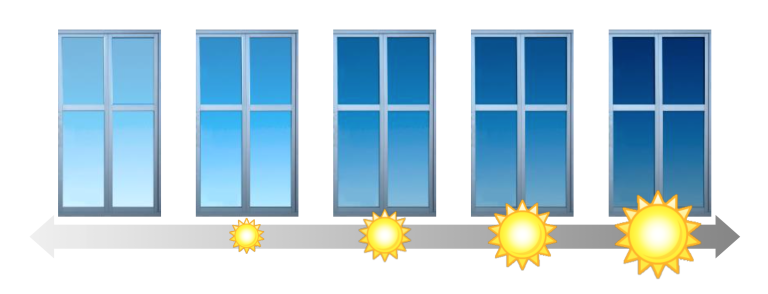
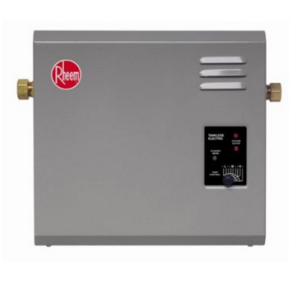
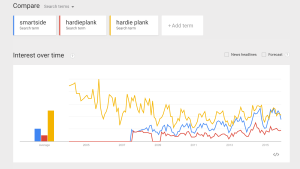

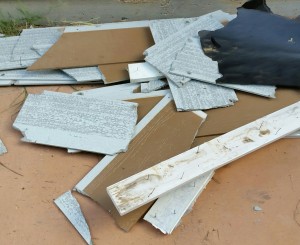

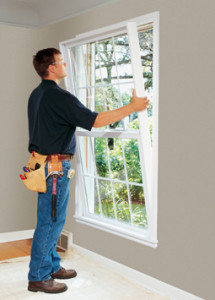



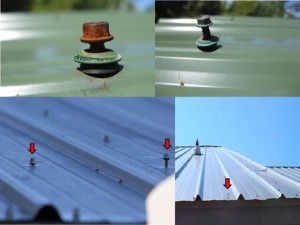
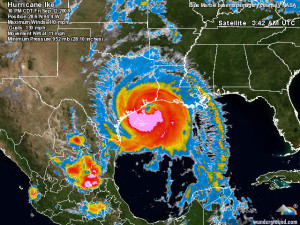
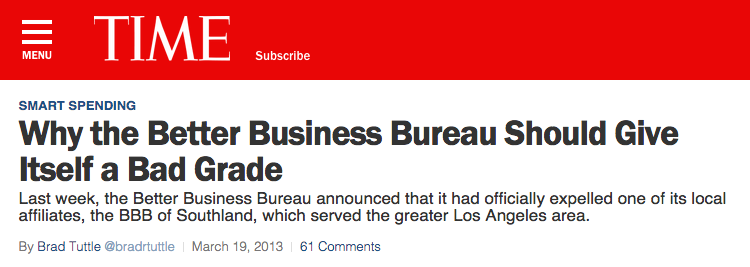

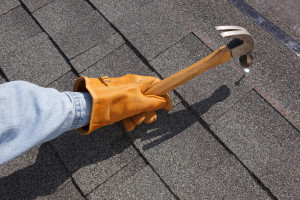


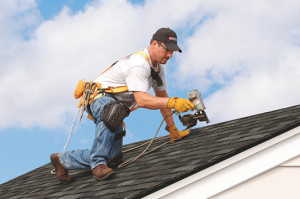




I never knew there was so much history behind siding. I’m glad someone knows so much about siding. We were looking to side our house again and weren’t sure which siding we should use. Thank you for taking time out of your own day to write some information on siding. This article has made our decision much easier. We will be in touch with you soon for an estimate.
Ann,
Thanks so much for your response. Most homeowners and myself had a limited knowledge on the history of siding products. I will also confess that I learned more after writing the Evolution Of Siding article. I look forward to offering you an estimate for your home when you are ready. Greg